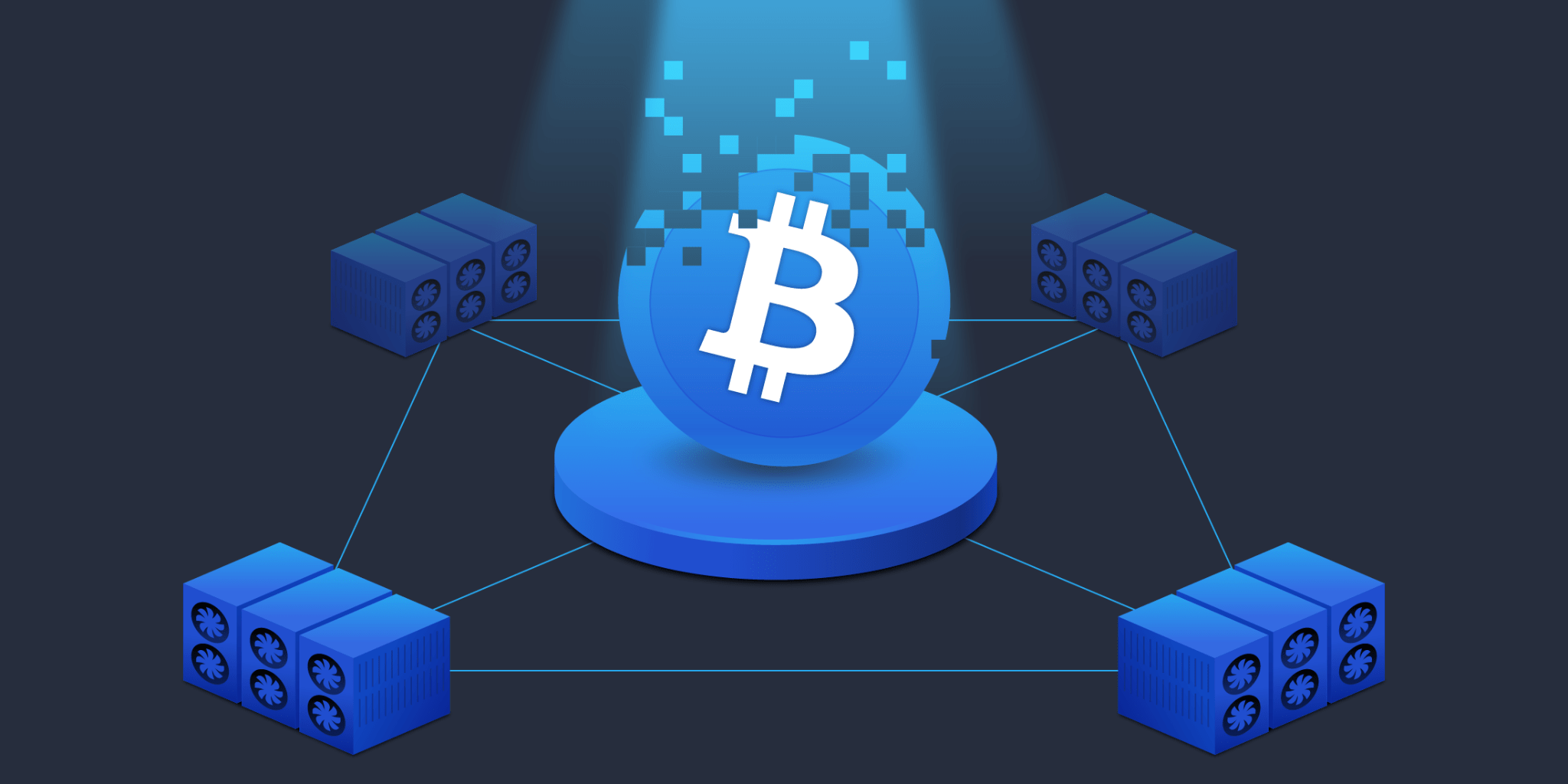Is BVM Ready For A New Bitcoin Network Revolution?

However, as the Bitcoin ecosystem expands and its demands develop, the need for increasingly complicated functionality, such as smart contracts, emerges. For a long time, smart contract applications were mostly focused on blockchain platforms such as Ethereum, but with the introduction of the Bitcoin Virtual Machine (BVM), this is progressively changing.
A smart contract is a contract that automatically enforces its terms, which are put in code into the blockchain. Smart contracts enable the development of increasingly complicated decentralized apps (dApps) on the blockchain. Although blockchain systems such as Ethereum currently allow smart contracts, Bitcoin is not intended to handle this feature directly.
What is a Virtual Machine?
A virtual machine (VM) is a program that emulates a computer system. It has a virtual CPU, memory, and storage and appears, from the outside, to be no different than a physical machine with the same hardware.
What is the function of a Virtual Machine?
An operating system, data, and programs are all part of a virtual computer. It functions just like a real computer; it can host webpages, execute applications, and connect to other computers on a network. When seen on a screen, the virtual machine appears as a window running inside the operating system of that computer.
It also contains a CPU, memory, and storage, but they are all virtual rather than real. As a result, numerous virtual machines may live on a single server. When this occurs, the server manages them using a piece of software known as a hypervisor. The hypervisor links the virtual hardware of the VM with the actual components of the server.
In this scenario, a single physical server may host two, three, four, or even ten virtual machines. Nevertheless, the number is restricted by the server’s resources; too many VMs would result in poor performance.
What is Bitcoin Virtual Machine (BVM)?
A blockchain project dubbed MVC (MicroVision Chain) was created to investigate the feasibility of incorporating smart contracts inside the simplicity and security of Bitcoin. MVC is a blockchain based on the UTXO (Unspent Transaction Output) concept that employs the same proof-of-work (PoW) consensus mechanism as Bitcoin.
MVC, on the other hand, presents a smart contract paradigm called BVM (Bitcoin Virtual Machine), which intends to improve the capability of Bitcoin-based smart contracts. BVM has immense promise in the approaching new age, demonstrating that Bitcoin can be programmed via code and can execute smart contracts.
The following are some of the primary benefits of BVM:
- Simple to maintain: Since the contract in BVM is deterministic, the output is fully dependent on the input and does not depend on or affect the external state. This improves the code’s readability and maintainability by making it more intelligible and predictable.
- Since BVM has no global state, the state safety issue in parallel computing is successfully overcome. BVM’s architecture allows it to handle large-scale contract computations, demonstrating better performance scalability effectively.
- Ease of testing and debugging: Since BVM uses functional programming, the testing process is simplified. Since the contract is deterministic, developers only need to concentrate on the input and output, simplifying debugging and avoiding any difficulties caused by external state concerns.
- BVM’s functional programming paradigm supports the creation of concise, well-structured code. Moreover, functional programming makes it easier to write resilient code by allowing for immutability and stateless functions. This significantly decreases issues caused by state changes, making the code more predictable, trustworthy, and easy to debug.
- Code simplicity and compactness: BVM’s stack-based approach enables the creation of simpler and more compact code. Its simplicity minimizes code size while also allowing for more effective use of memory and bandwidth. Also, simpler code has a reduced error rate, which enhances code dependability, which is very important in the smart contract situation.
The purpose of BVM’s design is to combine the benefits of Bitcoin with the flexibility of smart contracts to accomplish the goal of growing more complicated functionalities in the Bitcoin network. BVM is Bitcoin-compatible and depends on Bitcoin’s fundamental technology, building on this foundation to enable smart contract features that Bitcoin does not support in its original form.

Effective Bitcoin scaling solution
The success of many tracks within the Bitcoin ecosystem has been really spectacular this year. The Ordinals protocol has provided the Bitcoin ecosystem with unparalleled exposure and liquidity, while new standards such as BRC-20 and SRC-20 have spurred repeated waves of market enthusiasm. Yet, Bitcoin network congestion and excessive transaction fees have suddenly emerged as heated themes. The area of smart contracts and DeFi has had little attention in the past due to the unique nature of Bitcoin. Nevertheless, has pioneered the BVM idea, integrating Bitcoin smart contracts into a new narrative.
MVC is recognized as the finest Bitcoin expansion isomorphic chain. It shares Bitcoin’s core UTXO structure, consensus method, total amount, etc. As a result, it may build a one-to-one mapping connection with every Satoshi of BTC and become some degree of parallel world-like sidechains of BTC.
MVC features the industry’s first Turing-complete smart contract based on Bitcoin UTXO, and it has reached ultra-high performance on the test network over 1w TPS. Its ecosystem presently has over 20 apps accessible, 1w+ active addresses, and is set to unleash the future of creating enormous applications on Bitcoin and transporting hundreds of millions of people.
It should be noted that MVC and BVM are not designed to replace Bitcoin but to function as side chains to Bitcoin’s current architecture, allowing for the indefinite development of the Bitcoin blockchain. By isolating these experimental features from the core Bitcoin protocol, Bitcoin’s simplicity and security can be maintained while its potential variety of uses is expanded.

Conclusion
MVC is developing a BVM capable of executing analogous activities inside the Bitcoin network, similar to how the Ethereum Virtual Machine (EVM) functions and executes smart contracts within the Ethereum network. A BVM’s potential might substantially transform the environment, establishing Bitcoin as a strong participant in decentralized applications.
Ultimately, Bitcoin offers immense potential for scaling applications, owing to its unique simplicity and security. As the Bitcoin ecosystem evolves, initiatives such as MVC develop, providing innovations and fresh concepts that have significantly supported Bitcoin’s integrity.
MVC’s BVM demonstrates that Bitcoin is likely to integrate smart contract features comparable to platforms like Ethereum, which will definitely enrich and diversify the cryptocurrency ecosystem. We are certain that with further investigation and practice, we will see a more diversified and vibrant blockchain future.
Bitcoin is about to undergo a huge shift. Ordinals, the planned BRC-20 standard, smart contracts, and the creation of a Bitcoin Virtual Machine all point to a future in which Bitcoin evolves from a basic transactional cryptocurrency to a powerful, multifunctional blockchain network capable of supporting a range of decentralized applications. Bitcoin is in an exciting period, and progress in the next years is widely awaited.
DISCLAIMER: The information on this website is provided as general market commentary and does not constitute investment advice. We encourage you to do your own research before investing.






 Bitcoin
Bitcoin  Ethereum
Ethereum  Tether
Tether  USDC
USDC  TRON
TRON  Dogecoin
Dogecoin  Cardano
Cardano  Bitcoin Cash
Bitcoin Cash  Chainlink
Chainlink  LEO Token
LEO Token  Stellar
Stellar  Monero
Monero  Zcash
Zcash  Litecoin
Litecoin  Hedera
Hedera  Dai
Dai  Cronos
Cronos  OKB
OKB  Tether Gold
Tether Gold  Ethereum Classic
Ethereum Classic  KuCoin
KuCoin  Gate
Gate  Algorand
Algorand  Cosmos Hub
Cosmos Hub  VeChain
VeChain  Dash
Dash  Tezos
Tezos  Stacks
Stacks  TrueUSD
TrueUSD  IOTA
IOTA  Basic Attention
Basic Attention  Theta Network
Theta Network  Decred
Decred  NEO
NEO  Synthetix
Synthetix  Qtum
Qtum  Ravencoin
Ravencoin  0x Protocol
0x Protocol  DigiByte
DigiByte  Zilliqa
Zilliqa  Nano
Nano  Numeraire
Numeraire  Siacoin
Siacoin  Waves
Waves  Ontology
Ontology  Enjin Coin
Enjin Coin  Status
Status  BUSD
BUSD  Pax Dollar
Pax Dollar  Hive
Hive  Lisk
Lisk  Steem
Steem  Huobi
Huobi  NEM
NEM  OMG Network
OMG Network  Augur
Augur  Bitcoin Gold
Bitcoin Gold  Ren
Ren  Bitcoin Diamond
Bitcoin Diamond